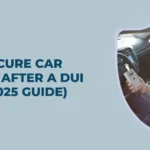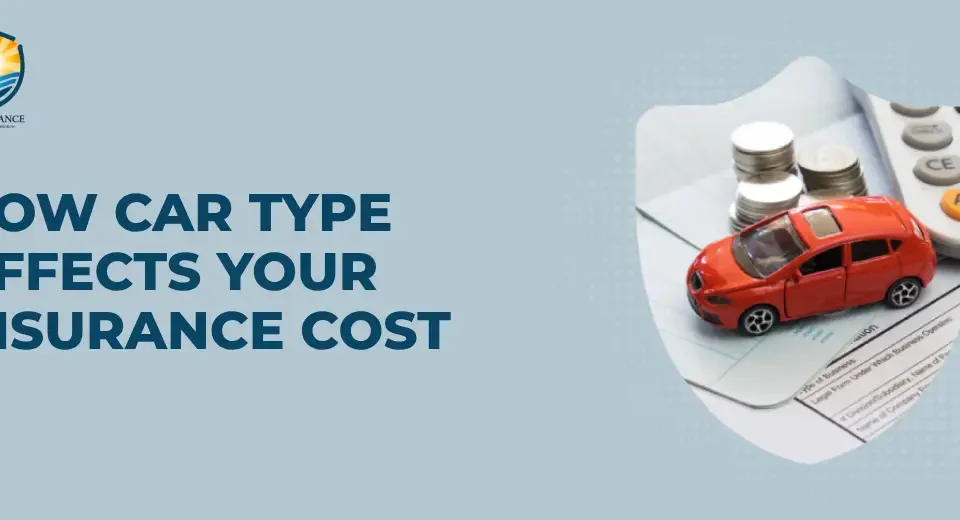What Is SR-22 Insurance and Who Needs It?

Car Insurance for Young Drivers: Everything You Need to Know
May 1, 2025
How to Get Insurance After a DUI in Texas: A Step-by-Step Guide for 2025
May 2, 2025SR-22 insurance is often misunderstood. Despite its name, it's not a type of insurance—it's a certificate your insurer files with the state to prove you carry the minimum required auto coverage.
Typically required for high-risk drivers after serious violations like DUIs or driving without insurance, an SR-22 affects both your legal status and your insurance rates. In this guide, you'll learn who needs an SR-22, how to file it, how long it's required, and how it impacts your premium.
What Is SR-22 Insurance?
An SR-22 is a financial responsibility form filed by your auto insurer with the state to confirm that you carry the legally required minimum liability coverage.
- It’s not a separate insurance policy, but a certificate tied to your existing auto insurance.
- Usually required after serious driving violations like a DUI, reckless driving, or driving without insurance.
- Acts as proof of coverage that you're financially responsible in case of an accident.
- Different from regular insurance because it involves state filing and monitoring by your insurer.
- Helps you regain or maintain your driving privileges after a license suspension or court order.
Who Needs SR-22 Insurance?
States typically require an SR-22 for drivers considered high-risk due to serious or repeated violations. Common reasons include:
- DUI or DWI convictions, even first offenses
- Reckless driving or excessive speeding
- Driving without valid insurance or proof of coverage
- Multiple traffic violations within a short time
- License suspension or reinstatement due to driving offenses
Whether an SR-22 is required often depends on the driver’s age, record, and the severity of the infraction. Each state sets its own rules on eligibility and duration.
How to Get an SR-22 Certificate
Filing an SR-22 is usually handled by your insurer, but there are important steps to follow:
- Contact your insurance provider and request an SR-22 filing.
- Pay the SR-22 filing fee, typically ranging from $15 to $50.
- Ensure your policy meets state minimum liability requirements.
- Not all insurers offer SR-22 filings—you may need to switch to a provider that does.
- Once approved, your insurer sends the form directly to the state DMV.
- Filing is usually processed within a few days, though timing varies by state.
How Long Do You Need SR-22 Insurance?
The required duration for SR-22 insurance depends on your state and violation, but typically lasts three years.
- Most states mandate SR-22 filing for 2 to 5 years, with 3 years being the most common.
- Any lapse in coverage can reset the clock or lead to license suspension.
- Additional violations during the monitoring period can extend the SR-22 requirement.
- It’s essential to maintain continuous coverage to avoid restarting the filing period.
Always verify the exact requirement with your state DMV or court order.
How SR-22 Affects Car Insurance Rates?
Filing an SR-22 doesn’t raise your rate directly, but being labeled high-risk does.
- Drivers needing an SR-22 often see higher premiums due to serious violations.
- Insurance companies may reclassify you as a high-risk driver, increasing your risk tier.
- Some insurers may deny coverage or require switching to specialty carriers.
- Expect to lose access to standard discounts or preferred rates.
- Once the SR-22 period ends and your record improves, rates can gradually decrease.
Maintaining a clean driving history post-violation is key to restoring lower premiums.
Which States Require SR-22?
SR-22 requirements vary by state, depending on the severity of the driving offense.
- Most U.S. states require SR-22 filings for high-risk drivers to reinstate their license.
- Florida and Virginia use FR-44, a stricter version requiring double the liability limits.
- SR-21 is a separate form used in some states to prove insurance after an accident.
- States like Delaware, Kentucky, New Mexico, New York, North Carolina, and Oklahoma generally do not require SR-22 filings.
Always check with your state’s DMV to confirm exact requirements and terminology.
Alternatives to SR-22
Some drivers may not need a traditional SR-22 filing, depending on their situation.
- Non-owner SR-22: Ideal for drivers without a car but who still need to meet state requirements.
- You can switch to a non-owner policy to maintain continuous coverage and legal compliance.
- If you move to a state that doesn’t require SR-22, you may still need to maintain it if the order came from your previous state.
Secondary or alternative insurance options may apply if you're driving infrequently or under supervision.
Frequently Asked Questions
Conclusion
Getting car insurance as a young driver can feel overwhelming, but understanding your coverage options, comparing quotes, and avoiding common mistakes can make a big difference.
Safe driving habits not only keep you protected but also help lower your premiums over time.
Take the next step: use a comparison tool or talk to a licensed insurance agent to find a policy that fits your needs and budget.




